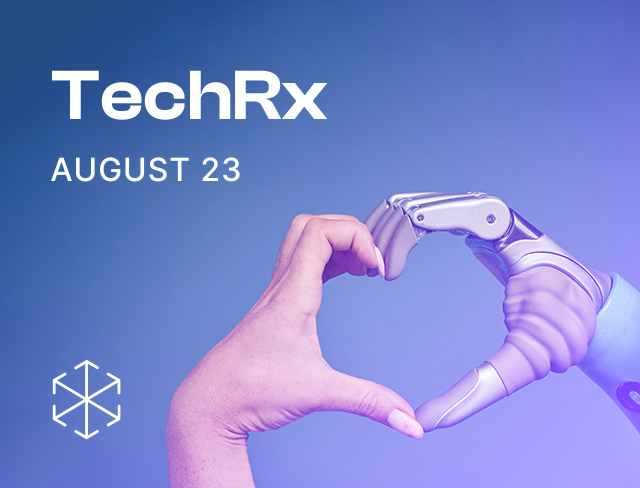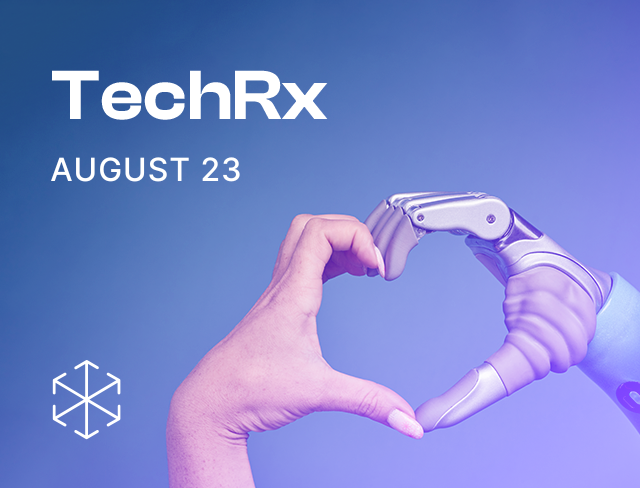Background:
In August 2020, Prime Minister Narendra Modi launched the National Digital Health Mission (NDHM). It was launched as a pilot in six union territories.[1] The NDHM was housed under the National Health Authority (NHA). It is intended to be an omnichannel digital healthcare platform that increases access to healthcare, whether it is through telemedicine, online sale of medicines, home collection of labs and diagnostics, or finding health facilities/professionals for in-person care. The NDHM is made up of ‘building blocks’ that will be maintained centrally (i.e., at the union government level). Government and private entities alike can integrate into these building blocks to provide healthcare in their cities/states. The building blocks include: (i) unique health ID for each person; (ii) health facility registry listing all the health facilities approved for listing; (iii) healthcare professionals registry listing all the professionals approved for listing; (iv) digital locker for health records of each person getting care through the NDHM; and (v) the proposed (yet to be launched) unified health interface.[2] The NHA also launched a sandbox for interested entities to integrate and test their solutions, before taking them live in what will be the NDHM ecosystem.[3]
In June and July 2021, the NHA released consultation papers for public comments on the health facility registry, [4] healthcare professionals’ registry, and a paper proposing the creation of a new building block, namely, the unified health interface. [5] We provide an overview of our comments to the consultation papers on health facilities registry and healthcare professionals’ registry in this post, and our comments to the consultation paper on the unified health interface here[IL1] .
In this post we provide a summary of our comments to the NHA’s consultation papers on the health facility registry and healthcare professionals’ registry. Our detailed comments to these papers can be read here [IL2] and here[IL3] .
Overview
The health facility registry and healthcare professionals’ registry are intended to be searchable lists of facilities and professionals that provide healthcare services in-person or through telemedicine. They are intended as the single source of truth of these facilities and professionals. The consultation paper on healthcare professionals proposes linking the health facility and healthcare professionals’ registries. This linkage is much needed as it enables a host of opportunities that make it easy to (i) conduct research; (ii) engage in evidence-based policymaking; and (iii) enable patients to find the healthcare support they need.
Summary of our comments
I. Consultation paper on health facility registry (HFR paper):
1. What licensing/regulatory authorities should be consulted for verifying information provided by health facilities?
Issue: The HFR paper provided a list of licensing authorities that could be involved in providing the required permissions to set up different types of health facilities. The HFR paper sought comments on whether any authority had been missed in the list.
Our input: The licensing entities listed in Annexure 2 of the HFR paper should include state and local authorities tasked with licensing and monitoring under state-level shops and establishments laws. This is because in some states like Maharashtra clinical establishments that employ 10 (ten) or more persons, must comply with and get a registration certificate under the relevant shops and establishments law.[6]
2. How should ‘health facility verifiers’ be chosen and how should a platform for their coordination be set up?
Issue: The HFR paper provided options for: (i) the approach to onboarding and training health facility verifiers (i.e., persons tasked with verifying information provided by facilities); and (ii) the approach to setting up a technology platform for health facility verifiers to perform their function. The HFR paper sought comments on which approach to adopt for both these issues.
Our input: The health facility verifier should be appointed and trained by a standing committee to ensure their independence from the hospitals and regulators (alternative 1 proposed in the HFR paper).[7]The technology platform set up for health facility verifiers should also be independently set up as a common building block that companies can apply to be part of, to provide a platform for health facility verifier (alternative 2 proposed in the HFR paper).[8] This will help the NHA rely on newer technologies for verifying the information provided by health facilities. It will also help ensure independence of the verification process.
3. Are there any issues with governance of the registry?
The issue: The NDHM’s running will involve the NHA, the Ministry of Health and Family Welfare, and potentially even technical inputs from the ministry of electronics and information technology. The NDHM will also need support from state governments. Finally, the NDHM is comprised of various building blocks (e.g., the health facilities registry) that must operate seamlessly. This seamless operation of the building blocks will also depend on other regulatory authorities (e.g., the national medical commission for verifying the credentials of doctors listed on the NDHM). The level of coordination required necessitates a robust and agile governance framework, which the HFR paper did not delve into.
Our input: The healthcare facility registry should be backed by a robust governance framework prescribing details of the working and management of the registry and provisions, ensuring process accountability and transparency.
4. How can the NHA ensure accuracy of information on the registry?
The issue: The HFR paper does not delve into ensuring that information related to each health facility is updated periodically. The health facility registry is intended as the single source of truth for all health facilities operating in the NDHM. Additionally, as a building block of the NDHM, the health facility registry may become relevant for policymaking or research. Periodic updating of information about a health facility, directly impacts the usability of the health facility’s information, for research or policymaking.
Our input: The health facility registry should be updated periodically to ensure that it can be relied on for research and evidence-based policy making. The health facility registry should also have a ‘last updated’ date mentioned on it. The health facility verifier should be tasked with ensuring a facility’s records are up to date on the health facility registry.
II. Consultation paper on healthcare professionals’ registry (HPR paper):
1. How will the NHA guide applications from healthcare professionals?
The issue: The HPR paper proposed the self-registration mode of data entry, where the healthcare professionals can upload the required information. The information is then verified by the concerned state or local authority or council, as the case may be.
Our input: NHA should provide easy-to-use guide with explainers on how healthcare professionals can register/ and how health facilities (or relevant authority for that professional), can verify the information provided at the time of registration. The guides should also provide timelines for both.
2. How will the NHA verify the information submitted by healthcare professionals, including those that do not have a professional council or authority overseeing their profession?
The issue: The HPR paper proposed two options for verifying the information provided by the healthcare professional: (i) the professional’s governing council or relevant authority verify the information, or (ii) the health facility where the healthcare professional employed will verify the information.
Our input: Data verification should be specific to the type of professional and can be different for each category of professional. For example, doctors’ data should be verified by the State Medical Commission, while a community health worker can be verified by the health facility that they work in.
3. Who should have the responsibility of verifying credentials of healthcare professionals – the NHA or the licensing authorities?
The issue: The HPR paper sought comments on whether the input and management of healthcare professionals’ data should be centralised with the NHA or decentralised (i.e., the responsibility of verifying the professionals, rests with the licensing and accreditation authorities/bodies/councils).
Our input: The mode of data governance should be decentralised and not overlap or infringe on the obligations and functions of local authorities, professional councils, and accreditation bodies. Here, decentralisation refers to the NHA acting as aggregator of information and leaving the responsibility of vetting candidates and exercising oversight to the licensing authorities and accreditation bodies.
4. What kind of relationship should the NHA and NDHM have with these licensing authorities?
The issue: Healthcare professionals are overseen by different councils. The health facility registry’s accuracy and existence depends on a frictionless relationship with these councils.
Our input: There should be a policy framework to guide the relationship between the NHA and the relevant licensing authorities/professional councils.
5. Should the healthcare professionals’ registry and health facilities registry be linked?
The issue: The HPR paper proposed linking the two building blocks – the healthcare professionals registry and health facilities registry and sought comments on this.
Our input: There should be guidelines for the linkage of the healthcare professionals’ registry and health facility registry. These guidelines can detail instances where entries on the two registries can be delinked (e.g., a situation where there is discrepancy in the number of healthcare professionals working in the health facility). This will also contribute to the accuracy of the two registries and therefore their reliability for research or policymaking.
6. Which professionals should be included in the healthcare professionals’ registry?
The issue: The HPR paper suggests that patients, pharmaceutical companies, industry trade groups, insurers, and healthtech should adopt or enrol in the healthcare professionals’ registry. The HPR paper lists incentives for the same. It is unclear as to why these stakeholders have been included in the registry.
Our input: The NHA should have a clear rationale behind the entry of professionals in the healthcare professionals’ registry, and what level of patient and patient data access such professionals will have. The clear rationale laid down.
7. Are there any considerations for designing the healthcare professionals’ registry?
The issue: The healthcare professionals registry will incorporate different categories of professionals. A list or database that is not easy to navigate for all categories of professionals will be detrimental to patients.
Our input: The healthcare professionals registry should be designed to ensure easy navigation across all categories of professionals and their specialties.
This post has been authored by team at Ikigai. For more information please reach out to us at contact@ikigailaw.com
Image Credits: Pixabay
[1] Prime Minister of India’s Independence Day speech, (August 15, 2020), https://pib.gov.in/PressReleasePage.aspx?PRID=1646044.
[2] National Health Authority, About the NDHM, https://ndhm.gov.in/home/ndhm
[3] National Health Authority, NDHM Sandbox, https://sandbox.ndhm.gov.in .
[4] Consultation paper on the health facility registry, https://ndhm.gov.in/assets/uploads/consultation_papersDocs/Consultation-Paper-on-Health-Facility-Registry.pdf.
[5] Consultation paper on the healthcare professionals registry, https://ndhm.gov.in/assets/uploads/consultation_papersDocs/Consultation-Paper-on-Healthcare-Professionals-Registry.pdf.
[6] Section 2(4) “Establishment”, Maharashtra Shops and Establishments (Regulation of Employment and Conditions of Service) Act, 2017, https://lj.maharashtra.gov.in/Site/Upload/Acts/H%20693.pdf.
[7] Alternative 1: The onboarding and training of the Health Facility Verifier shall be done by a standing committee. The role of the committee shall be as follows: (1) Shortlist the applications with respect to the eligibility criteria; (ii) Verifying the credentials of the shortlisted applicants and (iii) Verifying the capability of the applicant to undertake the health facility verification process. The responsibility of drafting the guidelines and module for the selection, onboarding and training of the Health Facility Verifier shall be with the assessment body, National Accreditation Board for Certification Bodies (NABCB), that currently does the same for other organisations. The Health Facility Verifiers will be governed by the guidelines mentioned in the NDHM Health Facility Registry Verification and Usage Policy (to be released by NDHM) along with any other applicable laws and policies. See para 3.3.3., Chapter 3, Health facility registry, Consultation paper on health facility registry.
[8] Alternative 2: Under this alternative, NDHM may build the technology portal as a common building block and then allow other players in the market to replicate the platform; individual organisations eligible to become a Health Facility Verifier and enrolled in NDHM have the freedom to develop independent data verification platform for verification of Health Facilities, provided that the platform complies with the guidelines set by NDHM and is integrated with HFR using NDHM APIs. See para 3.3.4(2), Chapter 3, Health facility registry, Consultation paper on health facility registry.










